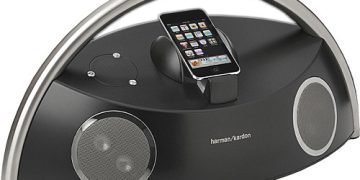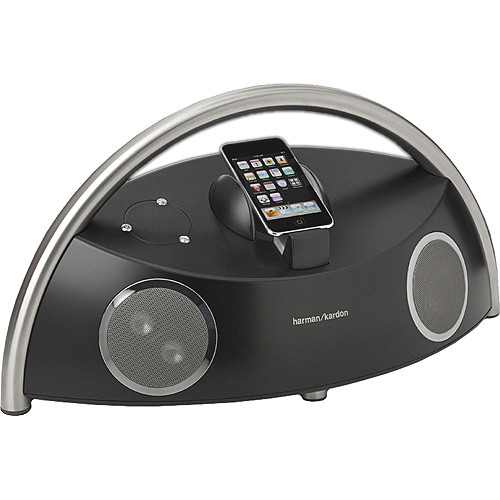To create a slideshow for a projector, use software like PowerPoint or Keynote to organize your photos and add transitions and effects. Save the file as a slideshow and connect your device to the projector for display.
Creating a slideshow for a projector is an effective way to showcase visuals for any project or presentation. By utilizing software like PowerPoint or Keynote, you can easily arrange your photos, add transitions, and incorporate effects to make your slideshow engaging.
Once complete, simply save the file as a slideshow and connect your device to the projector for seamless display. In this guide, we’ll explore the steps to efficiently create a dynamic slideshow for your projector, ensuring that your visuals captivate and leave a lasting impression on your audience.
Table of Contents
ToggleChoosing The Right Tools
When it comes to making a slideshow for a projector, choosing the right tools is crucial. From selecting the software to ensuring compatibility with the projector, every aspect of the process holds its significance. Let’s delve into the key considerations for choosing the right tools for your projector slideshow.
Considerations For Software Selection
Selecting the right software is the foundation of creating a stunning projector slideshow. Look for software that offers a user-friendly interface, a wide range of design options, and seamless integration with your projector. It should also provide features for adding transitions, effects, and audio to enhance the viewing experience.
Importance Of Compatibility With Projector
The compatibility of the software with your projector is crucial to ensure that your slideshow performs optimally. When choosing software, make sure to check its compatibility with various projector models, resolution settings, and file formats. This ensures that your slideshow will display flawlessly without any technical glitches.
Options For Both Pc And Mac Users
For PC users, popular options such as Microsoft PowerPoint, Adobe Spark, and ProShow Producer offer versatile features and seamless integration with projectors.
For Mac users, software like Keynote, Adobe Spark, and FotoMagico provide powerful tools for creating captivating projector slideshows. Consider your operating system and explore the software options tailored to your platform for a smooth experience.
How To Make A Slideshow With Impact
Creating a compelling slideshow for a projector involves more than just assembling a few images. To make a slideshow truly impactful, it’s essential to consider various elements, such as high-quality visual content, engaging transitions and effects, as well as the importance of timing and pacing. In this post, we’ll explore strategies for creating a high-impact slideshow that captivates your audience and leaves a lasting impression.
Strategies For High-quality Visual Content
When crafting a slideshow, the quality of your visual content plays a crucial role in engaging your audience. To ensure high-quality visuals, consider the following strategies:
- Use high-resolution images to maintain clarity and sharpness.
- Opt for visually appealing graphics and illustrations that complement your content.
- Choose a consistent color scheme and style to create a cohesive visual narrative.
Tips For Engaging Transitions And Effects
Engaging transitions and effects can elevate the visual appeal of your slideshow and keep your audience engaged throughout the presentation. Here are some tips to consider:
- Experiment with smooth transitions to seamlessly guide your audience from one slide to the next.
- Incorporate subtle animation effects to add visual interest without overwhelming the audience.
- Consider utilizing audio cues to enhance the overall impact of your slideshow.
Importance Of Timing And Pacing
Timing and pacing are critical components that can greatly influence the effectiveness of your slideshow. Pay attention to the following aspects to ensure optimal timing and pacing:
- Ensure that each slide is displayed for an appropriate duration to allow the audience to absorb the content.
- Strategically time transitions to maintain a seamless flow and prevent disruptions.
- Align the pacing of your slideshow with the narrative or message you aim to convey. Each slide should contribute to the overall story or concept.
Gathering And Organizing Content
Creating a compelling slideshow for a projector requires effective gathering and organizing of content. This crucial phase sets the stage for a seamless and captivating presentation. From sourcing high-quality media to curating and arranging material in a coherent sequence, here’s how to ensure your slideshow leaves a lasting impact.
Sources For High-definition Images And Videos
High-resolution images and videos form the backbone of an engaging slideshow. Utilize reputable stock photo websites such as Adobe Stock, Shutterstock, or Unsplash for professional, high-definition visuals. Additionally, consider creating original content through photography or video production to tailor the visuals to your specific project. Ensure the media is of appropriate resolution for the projector to convey sharp and vivid images.
How To Curate And Sequence Content Effectively
Content curation involves selecting the most relevant and impactful media for your slideshow. Prioritize cohesive storytelling by organizing the content in a logical progression. Utilize software such as Adobe Spark or Canva for seamless content creation and ordering. Maintain a balance between images and videos, ensuring they collectively convey the intended message effectively.
Ways To Include Multimedia And Interactive Elements
Enhance your slideshow by incorporating multimedia and interactive elements. Embed audio or music to complement the visuals and engage the audience on multiple sensory levels. Consider implementing interactive elements such as clickable links or pop-up information for an enriched viewer experience. Utilize presentation software like Microsoft PowerPoint or Prezi to integrate these features seamlessly.
Slideshow Design Principles
Discover the key principles for creating a compelling slideshow for a projector, focusing on impactful visuals, clear and concise messaging, and engaging transitions. By employing these design tactics, you can ensure an effective presentation that captivates your audience and effectively conveys your project’s message.
Best Practices For Color And Font Choices
Choosing the right colors and fonts can significantly enhance the impact of your slideshow. Bold and vibrant colors can attract attention, while subtle and complementary color schemes can create a visually pleasing experience. Avoid using too many colors, as this can overwhelm the audience and detract from the content. When it comes to font choices, it’s best to stick to clear and legible fonts that are easy to read even from a distance.
The Role Of Negative Space And Layout
Negative space, also known as white space, is crucial for creating a balanced and visually appealing design. It allows the content to breathe and prevents the slide from appearing cluttered. When planning the layout, consider the placement of key elements such as text, images, and graphics. Organize the content in a logical manner to guide the viewer’s eye through the slideshow.
Creating A Cohesive And Attractive Design
To ensure a cohesive and attractive design, consistency is key. Use a consistent color scheme, font style, and layout throughout the slideshow. This will help in creating a professional and polished look. Align text and images properly, and make sure that each slide flows seamlessly into the next, maintaining a cohesive visual narrative. By adhering to these design principles, you can create a slideshow that captivates and engages your audience.
Technical Aspects Of Slideshows
The Technical Aspects of Slideshows play a crucial role in delivering a seamless and visually stunning presentation through a projector. When creating a slideshow for a projector, understanding the technical requirements and considerations is essential to ensure optimal performance and quality.
Optimal Resolution And Aspect Ratios For Projectors
Choosing the right resolution and aspect ratio for your slideshow is imperative to achieve crisp and clear images on the projector screen. For high-quality display, it’s recommended to use a resolution of 1920×1080 (1080p), which is the standard for HD projectors. Additionally, maintaining an aspect ratio of 16:9 is ideal to ensure the slideshow fills the screen properly without distortion. When creating your slides, ensure that all images and graphics are compatible with the chosen resolution and aspect ratio to avoid pixilation or stretching on the projector.
Ensuring Smooth Playback Across All Devices
To ensure that your slideshow plays seamlessly on different devices and projectors, it’s crucial to use a universal file format such as PDF or PPTX. These formats are widely supported and can be easily displayed on various operating systems without compatibility issues. Optimizing your media files within the slideshow, such as videos and audio, can also contribute to smooth playback across different devices. Compressing and converting media files to formats compatible with most players and platforms can enhance the overall performance of the slideshow.
Troubleshooting Common Technical Issues
When preparing a slideshow for a projector, it’s essential to anticipate and preempt potential technical issues that may arise during the presentation. Ensure that all fonts and external media are embedded in the slideshow to avoid missing elements when transferring the file to another device. Checking the compatibility of fonts, transitions, and animations across different platforms is also crucial to prevent unexpected discrepancies during playback. Moreover, conducting a trial run on the actual projector and adjusting settings for optimal display can help identify and resolve any technical hitches beforehand.
Tailoring Slideshow For Your Audience
Creating a slideshow for a projector involves more than just compiling images and text. To truly captivate your audience, it is essential to tailor the slideshow to their preferences and expectations. By understanding their needs, customizing the content, and evoking specific emotions, you can ensure that your presentation leaves a lasting impression. Let’s explore the key aspects of tailoring your slideshow for your audience.
Understanding Your Audience’s Expectations
Before diving into the creation of the slideshow, take the time to analyze and comprehend the expectations of your audience. Consider the purpose of the presentation and the demographics of your viewers. Are they professionals seeking informative content, or are they general consumers looking for entertainment? Understanding these nuances will guide your choices in design, tone, and content selection.
Customizing Content For Specific Demographics
Customizing your slideshow content to suit specific demographics can significantly enhance the impact of your presentation. For instance, if your audience primarily consists of young adults, consider incorporating trendy visuals and relatable language. On the other hand, if your viewers are from a corporate background, focus on conveying professionalism and relevant industry insights.
How To Evoke Emotions And Convey Messages
To truly engage your audience, the slideshow should evoke emotions and effectively convey your messages. Utilize compelling imagery, poignant anecdotes, and relatable scenarios to elicit emotional responses. Additionally, ensure that your messages are clear and concise, leaving a lasting impression on your audience.
Finalizing And Testing The Slideshow
Once the content and visuals are in place, finalizing and testing the slideshow is essential to ensure a seamless presentation. This phase involves rehearsing the delivery, gathering feedback, and preparing for different presentation environments to ensure a successful showcase.
Importance Of Rehearsing And Refining The Slideshow
Rehearsing the slideshow allows presenters to familiarize themselves with the content and flow, ensuring a confident and engaging delivery. Refining the timing of transitions and ensuring the slides are visually appealing is critical for a polished presentation.
Techniques For Peer Review And Feedback
Seeking feedback from peers or colleagues can provide valuable insights into areas that may need improvement. Presenters can utilize techniques such as conducting practice runs in front of a small audience or requesting specific feedback on the clarity and impact of the slides.
Preparing For Different Presentation Environments
Adapting the slideshow for various presentation environments is crucial. Ensuring compatibility with different projector resolutions and optimizing the design for both dark and well-lit venues contributes to a professional and adaptable presentation.

Credit: en.wikipedia.org
Frequently Asked Questions For How To Make A Slideshow For A Projector
What Are The Best Software Options For Creating A Slideshow?
For creating a slideshow, popular software options include Microsoft PowerPoint, Keynote, and Google Slides. These programs offer a user-friendly interface, various templates, and seamless compatibility with projectors. Choose the software that best suits your needs and preferences for creating a captivating slideshow presentation.
How Do I Connect A Laptop To A Projector For A Slideshow?
To connect a laptop to a projector for your slideshow, use an appropriate cable (HDMI, VGA, or USB-C) to establish the connection. Adjust your laptop’s display settings to extend or duplicate the screen, and ensure that the projector is set to the correct input source.
This allows for a smooth and successful slideshow presentation.
What Are The Key Elements Of A Captivating Slideshow Presentation?
A captivating slideshow presentation should include visually appealing images, concise and engaging text, cohesive design elements, and seamless transitions. Utilize a consistent color scheme, appropriate fonts, and engaging content to capture the audience’s attention and effectively convey your message through the slideshow.
How Can I Ensure That My Slideshow Is Compatible With The Projector?
To ensure compatibility with the projector, review the supported file formats and resolution specifications of the projector. Opt for commonly used file formats (such as PDF or JPEG) and consider the aspect ratio and resolution to ensure a seamless display.
By optimizing your slideshow for the projector, you can avoid potential technical issues during the presentation.
Conclusion
Creating a slideshow for a projector is a straightforward process that can enhance presentations. By following these simple steps, you can effectively assemble and customize a slideshow for your projector, making your content visually engaging and impactful. With the right tools and techniques, you can elevate your project presentations with confidence.









